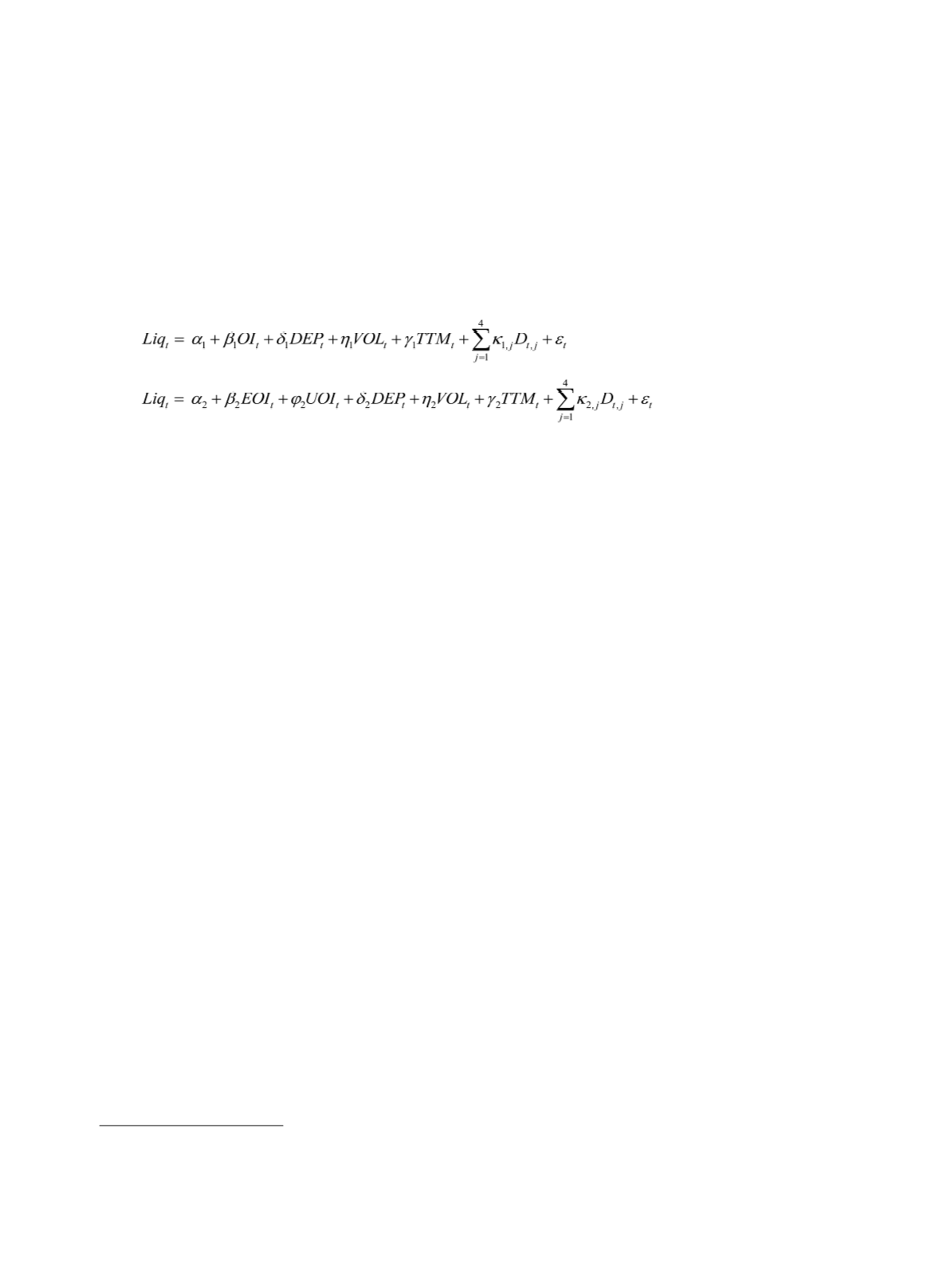

臺大管理論叢
第
26
卷第
3
期
161
of the hypotheses and to analyze the relationship between open interest and other variables.
Models (1) and (2) test implications (1) and (2) of Hypothesis 1, which states that open
interest reflects market participation. We regress liquidity measures, proxied for the degree
of market participation, against open interest and other control variables.
(1)
(2)
where
Liq
is one of the four liquidity proxies including volume (
VOL
), depth (
DEP
), the
Amihud illiquidity ratio (
ILLIQ
) and the Amivest liquidity ratio (
Amivest
). The illiquidity
ratio offered by Amihud (2002) is the daily ratio of absolute value of futures return to
volume, i.e.,
ILLIQ
= |
Return
|/
VOL
. It measures the price impact associated with per trading
volume. The larger the
ILLIQ
, the greater is the impact of a given amount of trading and the
lesser is market liquidity, and the less the market liquidity. The Amivest liquidity ratio
measures volume per unit of absolute value of price return, i.e.,
Amivest
=
VOL
/|
Return
|, and
was used by Dubofsky and Groth (1984), Cooper, Groth, and Avera (1985), and Amihud,
Mendelson, and Lauterbach (1997).
7
A high Amivest ratio indicates that futures contracts are
traded with little change in price, and hence liquidity is more sufficient.
For explanatory variables in Model (1),
OI
is the sum of open interest in two near-
month contracts on day t. We include
DEP
and
VOL
as control variables for regressions that
do not use them as dependent variable. This allows us to observe the net effect of
OI
to the
Liq
variable while control for potential omitted variable bias induced by
DEP
and/or
VOL
.
We also incorporate
TTM
, the remaining days to expiration of the contract with the greatest
open interest, to further control for the cyclical pattern in the open interest series. We add
four daily dummy variables
D
j
,
j
= 1, 2, 3, 4 for Monday, Tuesday, Thursday and Friday to
control for the day-of-the-week effect.
A positive (negative) value of
β
1
for regressions using
VOL
,
DEP
, and
Amivest
(
ILLQ
)
as dependent variable indicates that the level of open interest changes with liquidity,
indicating that open interest reflects information content of market participation. The results
7 For the calculation of Amihud illiquidity ratio and the Amivest liquidity ratio, we follow Amihud et al.
(1997) by employing volume instead of dollar volume.


















